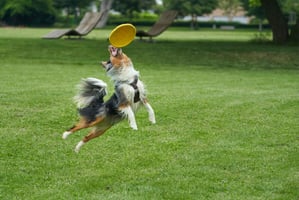Are you considering crate training for your 9 week old puppy? This comprehensive guide will show...
Border Collie Crate Training: A Comprehensive Guide
Are you looking for the best way to crate train your Border Collie? This guide will provide you with all the information you need to know about crate training your Border Collie. We will discuss the benefits of crate training, the necessary supplies, and the steps to follow to successfully crate train your Border Collie. By the end of this guide, you will be confident in your ability to crate train your beloved pup.
Introduction to Border Collie Crate Training
Border Collies are intelligent, energetic, and loyal dogs. Their intelligence and energy level require a lot of exercise and activities, so a crate is a great way to ensure their safety and energy expenditure. Crate training your Border Collie is a great way to ensure that your pup will remain safe and secure, even when no one is around.
Crate training is a beneficial and important step for your pup. It helps to create a safe and secure environment for your pup, and it allows your pup to learn how to be independent and develop self-control. Additionally, crate training can help to prevent bad behaviors and promote good behaviors. Crate training can also be used as a form of housebreaking your pup.
Benefits of Crate Training Your Border Collie
- Provides a safe and secure environment for your pup
- Helps your pup learn independence and self-control
- Prevents bad behaviors and promotes good behaviors
- Can be used as a form of housebreaking your pup
Necessary Supplies for Border Collie Crate Training
Before you start crate training your Border Collie, you will need to get the necessary supplies. The most important supplies you will need are the crate, bedding, and treats. The crate should be large enough for your pup to stand up, turn around, and lie down comfortably. The bedding should be comfortable and cozy for your pup. Lastly, treats are important for rewarding your pup for good behaviors and for encouraging them to enter the crate.
Necessary Supplies for Crate Training Your Border Collie
- Crate
- Bedding
- Treats
Steps to Follow for Border Collie Crate Training
Now that you have the necessary supplies for crate training your Border Collie, you can start the process. Crate training is a gradual process that should be done in stages. Here are the steps to follow for crate training your Border Collie:
Steps to Follow for Crate Training Your Border Collie
- Introduce the crate: Place the crate in an area of the house that is frequented by your pup. Let your pup explore the crate and get comfortable with it. Reward your pup with treats and praise when they enter the crate.
- Start feeding your pup in the crate: Place your pup’s food bowl inside the crate and let them eat inside the crate. Reward your pup with treats and praise when they enter the crate.
- Start closing the door: Once your pup is comfortable eating in the crate, start to close the door for short periods of time. Start with a few seconds and gradually increase the time. Always reward your pup with treats and praise when they enter the crate.
- Start leaving the house: When your pup is comfortable with the closed door, start to leave the house for short periods of time. Start with a few minutes and gradually increase the time. Always reward your pup with treats and praise when they enter the crate.
- Continue the training: Continue to reward your pup with treats and praise when they enter the crate. Make sure to take your pup out to go to the bathroom regularly. Additionally, make sure to keep the crate in a safe and secure area of the house.
Conclusion
Crate training your Border Collie is a beneficial and important step for your pup. It helps to create a safe and secure environment for your pup, and it allows your pup to learn how to be independent and develop self-control. By following the steps outlined in this guide, you will be confident in your ability to crate train your beloved pup. With the right supplies and the right steps, your Border Collie will be crate trained in no time!



